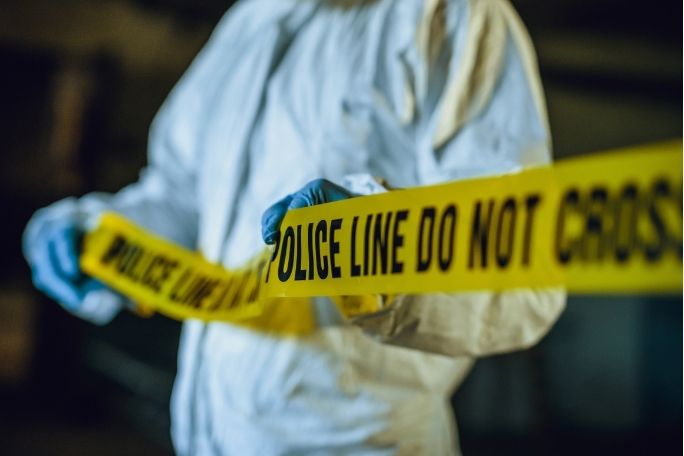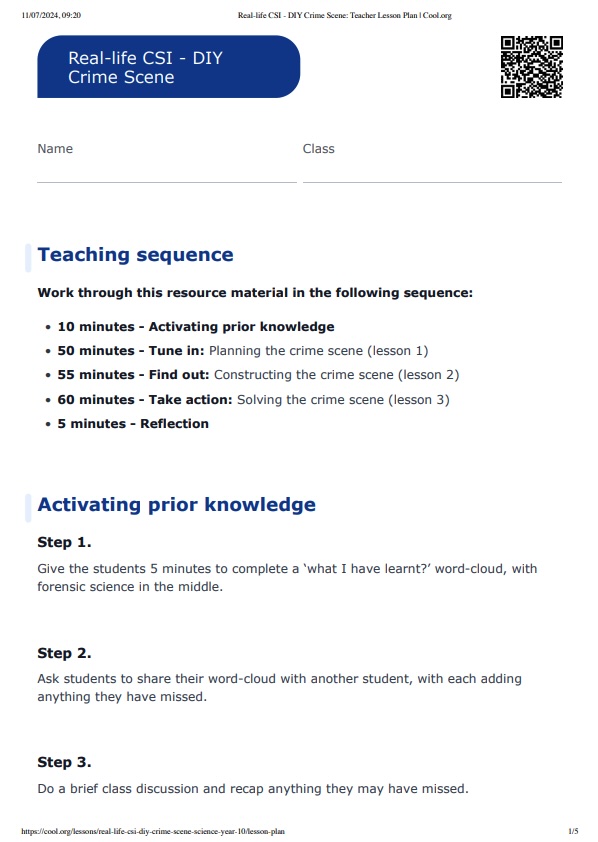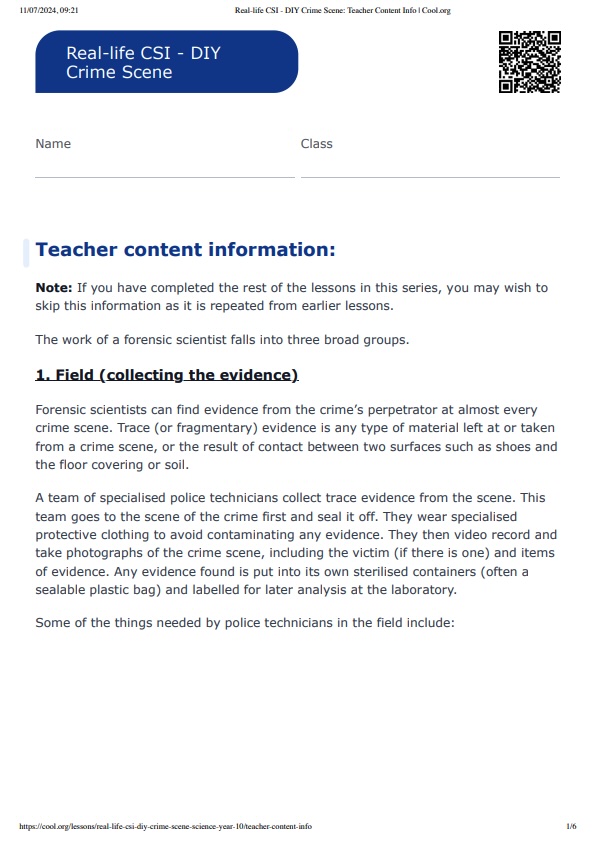Lesson summary
Students will use what they have learned about forensic science to create a crime scene scenario to be solved by other students. They will then present their crime scenes to other students, explain how to collect and analyse the evidence present and get the other students to try and solve the crime.
Learning intentions:
Students will...
- work in groups to plan a crime scene and then get other students to try and solve it
- share their knowledge of forensic science and the skills they have learnt to other students.
Success criteria:
Students can...
- apply knowledge of forensic science and skills to plan a crime scene for other students
- communicate their crime scene to other students and the steps needed to solve them.
Lesson guides and printables
Curriculum links
Select your curriculum from the options below.
Lesson details
21st Century Skills
This lesson is designed to build students’ competencies in the following skills:
- communication
- critical thinking
- collaboration
- ethical understanding
- problem solving
- social skills.
Curriculum Mapping
Australian Curriculum content descriptions (v9):
Year 10 Science:
- explain how scientific knowledge is validated and refined, including the role of publication and peer review (AC9S10H01)
- analyse the key factors that contribute to science knowledge and practices being adopted more broadly by society (AC9S10H03)
Syllabus outcomes: SC5-12ES, SC5-13ES
General capabilities: Critical and creative thinking, Ethical Understanding, Literacy
Relevant parts of Year 10 achievement standards: Students explain the processes that underpin heredity and genetic diversity and describe the evidence supporting the theory of evolution by natural selection. Students analyse the importance of publication and peer review in the development of scientific knowledge and analyse the relationship between science, technologies and engineering. They analyse the key factors that influence interactions between science and society.
Time required: 180 mins (split between three, 60 min lessons)
Level of teacher scaffolding: Low – the students should now have all the knowledge and skills they need to complete this task relatively independently, with minimal guidance from you
Resources Required
- Another class to be willing participants in having your class explain to them how to analyse a crime scene
- By the end of the planning phase of this lesson and, each group will order from you the materials they need to construct their crime scene in the construction part of the lesson. If the materials aren’t available, they will need to come up with alternatives or provide them themselves
- For the 'solving' lesson, each group will need their crime scenes. You will also need:
- gloves
- hairnets
- lab coats.
Additional Info
This is an original Cool+ lesson.




Welcome back!
Don't have an account yet?
Log in with:
Create your free Cool.org account.
Many of our resources are free, with an option to upgrade to Cool+ for premium content.
Already have an account?
Sign up with:
By signing up you accept Cool.org's Terms and Conditions(Opens in new tab) and Privacy Policy(Opens in new tab).